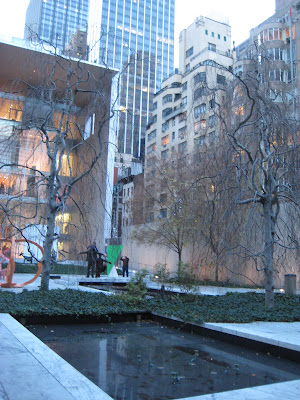Recently the
New York Botanical Garden invited me (or more accurately, they invited
New York Plants & Other Stuff) to a sneak peak of their
holiday train show.
If you haven't been, definitely check it out. I had been once before in 2003, but forgot how much fun it is to see these models of New York City sights made out of plant material. Paul Busse, a landscape architect and principal of his firm
Applied Imagination, fashions hundreds of buildings, using only bark, seeds, petals and leaves, etc.. He even uses lichens. To wit, one of my favorites had to be the Guggenheim:

Of course, I also had to walk around the grounds and check out what was happening in the garden.
Helleborus niger or Christmas rose or black hellebore, immediately caught my eye. Like
Lenten rose, Christmas rose is named such due to the season in which it blooms. The common name black hellebore is applied becuase the rhizome (a long, flat tuber or bulb-like
structure) is black.

The flower structure you see above is a bit unusual. The white parts that look like petals are sepals. The larger, stringy yellow parts that look like stamens are actually nectaries, petals that have been modified to hold nectar. Pollinators are usually bees and flies.

Hellebores have a rich history of medicinal use. The plant's roots contain two chemicals, helleborein - which can be considered a cardiac poison, and helleborin, a narcotic posion. Highly toxic, the plant can be used as an emmenagogue, cathartic, diuretic or cardiac stimulant in low doses. Higher concentrations of
Helleborus niger can cause death allegedly by relentless spasms and exhaustion. Wow, right? Apparently in ye olden times the plant was used to treat such outdated afflictions as hysteria, insanity and my new favorite word: dropsy, which is sort of like an extreme bloatedness.
Next week I'll be posting more photos of Busse's models along with some new plants.


















































